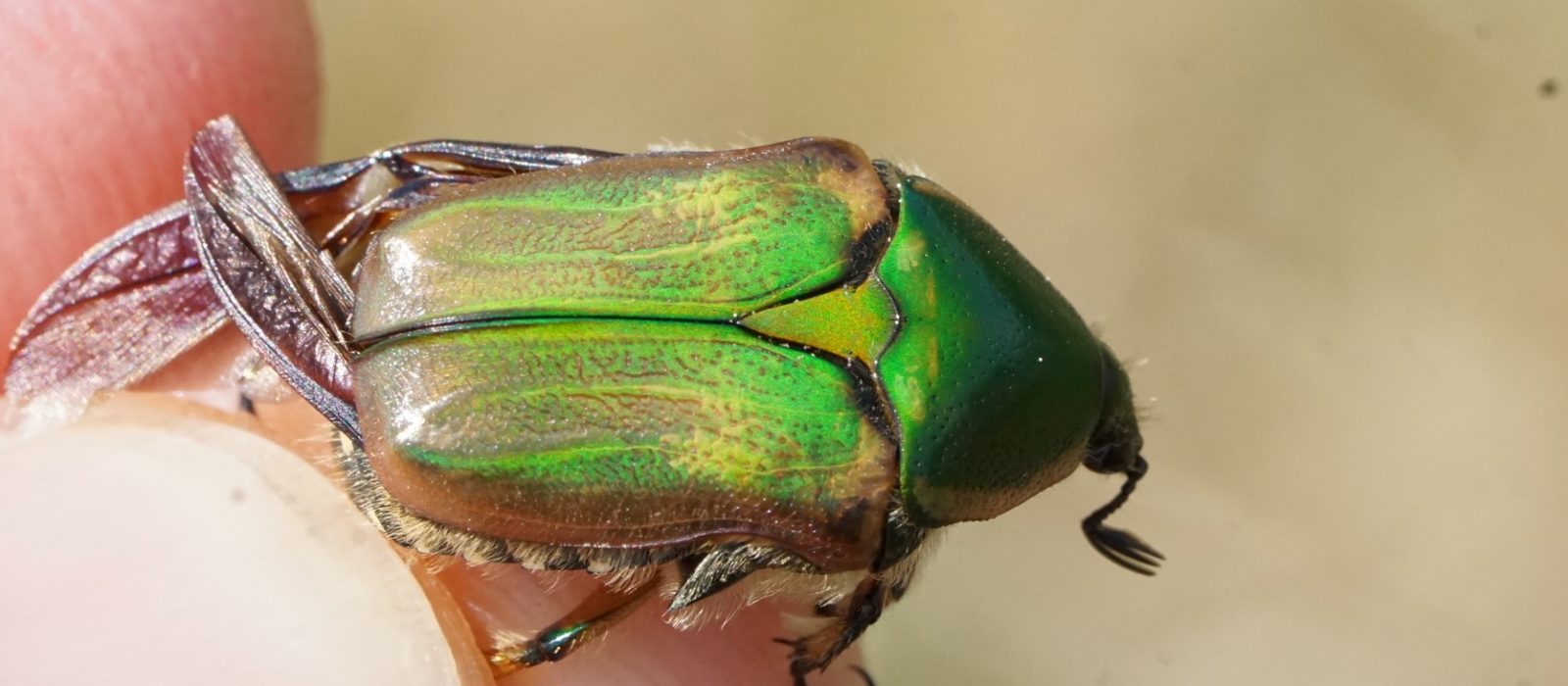SCARAB BEETLES: SCARABAEIDAE
These interesting insects belong to the Phylum Mandibulata, Class Insecta, Order Coleoptera and Family Scarabaedae. There are dozens of other families of beetles that occur on the island but only one other, the Tiger Beetles discussed in the next chapter, appear to have been much studied.
It is just good fortune that we happen to know very much about these beetles on Martha’s Vineyard. Goldstein and Simmons (2002) report on studies done here and on Nantucket and provide historical data based on museum specimens and published literature for the two large islands, for the five Elizabeth Islands, and for Tuckernuck and Muskeget. It comes as no surprise that Martha’s Vineyard, being about twice the size of Nantucket and many times the size of the other islands, hosts 56 of the 74 species known collectively from all nine islands, versus a total of 46 known for Nantucket. Also, 22 species of the 74 were recorded uniquely from the Vineyard. We add two Vineyard species, Maladera formosae and Euphoria fulgidae, from Research Grade records in iNaturalist.
Goldstein and Simmons (2002) also say that their survey of the small islands is far from complete since relatively little work has been done on them in comparison with the two large islands, but even here there is more to do. Nonetheless, it is clear that the further away one gets from the mainland and the smaller the islands become, the fewer species are found.
The study also suggests strongly that “structurally complex [plant] communities such as shrubby heathlands and grassy shrublands support a greater species richness as well as a greater richness of uncommon species than homogenous agriculturally derived areas and other ‘pure’ grasslands.” (Goldstein and Simmons, 2002:399) This conclusion has implications for the kind of land management and restoration projects that have the objective of preserving insect diversity on the Vineyard. Goldstein and Simmons do not feel that there is yet enough evidence to make strong conclusions about whether any species on the Vineyard have declined or not as a result of agricultural practices, historical burning regimes, or deforestation in the 1700-1900 period. The well-known Japanese Beetle, a pest especially on roses, was introduced into the United States in 1916 and has spread widely, another example of the folly of introducing species where they did not evolve naturally. The study also makes no conclusions about the zoogeographical affinities of the species known for Martha’s Vineyard.
Allan Keith; edited by Matt Pelikan, December 1, 2021
References:
Goldstein, P.Z, and T. Simmons. 2002. A checklist and commentary on the Scarabaeid fauna of the Massachusetts offshore islands (Coleoptera: Scarabaeidae). Journal of the New York Entomological Society 110(3-4):389-401.
